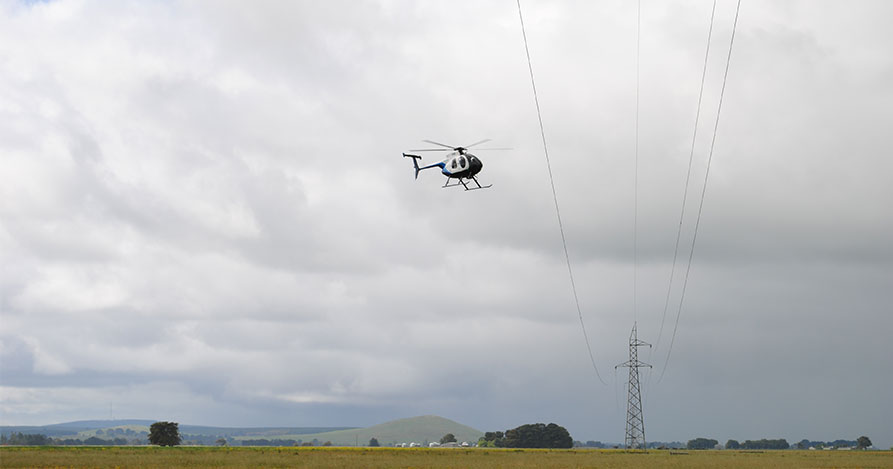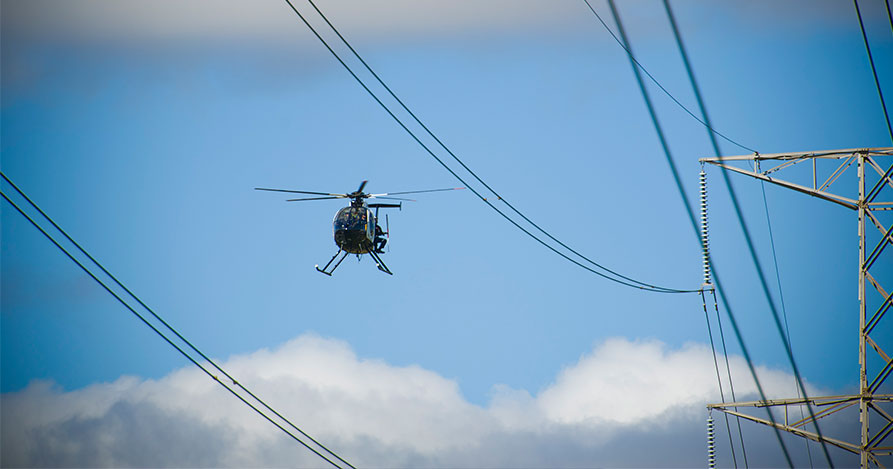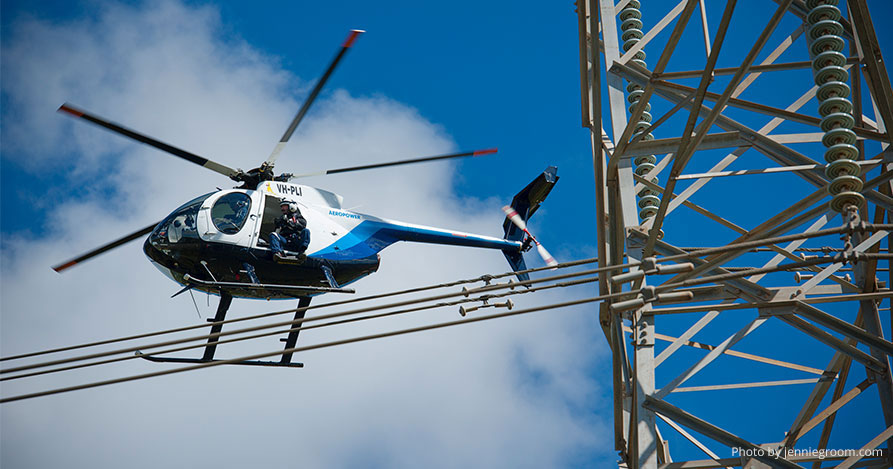Pre-Bushfire & Programmed Patrols
Aeropower’s aerial patrols have been developed to provide the network operator with a timely and efficient overview of its assets.
The helicopter provides an efficient and cost effective mobile observation platform to assist with identifying those obvious defects that could threaten the security of the network or present a risk to people or property.
With the helicopter flown above and to the side of the line, Aeropower’s qualified inspectors have a 180-degree field of view of the asset which assists them in identifying obvious maintenance or vegetation issues on the structure/pole and the conductor spans.
Where defects are identified, the helicopter is brought to a hover to enable the defect to be photographed and location, priority and other details recorded.
Aeropower patrols are conducted in accordance with industry guidelines (ENA NENS 08-2006 Aerial Surveillance of Overhead Electricity Networks), customer requirements and Civil Aviation Regulations.
Vegetation LiDAR Option
During an Aerial Patrol, the inspector will view the easement to identify vegetation that is within prescribed distances and potentially represents a risk to the asset.
Whilst the inspector is trained to make such assessments, the task of estimating the distance accurately is challenging from a moving helicopter – at best, such assessments are qualitative in nature.
To obtain quantitative vegetation data typically requires the use of a LiDAR scanner or similar technology. However, traditional LiDAR solutions have usually required larger, more expensive LiDAR scanners, large control systems/station and a dedicated LiDAR operator on board the aircraft. This effectively dedicates the aircraft to that task and therefore limits the others roles that the aircraft can undertake (without removing the LiDAR unit).
Innovations in LiDAR scanner and associated technology have enabled the development of a LiDAR solution that is small enough to be mounted on a helicopter on a semi-permanent basis and that can operate with a level of autonomy that requires only minimal monitoring by the helicopter crew.
These technology advances mean that Aeropower can fit a small LiDAR unit to a helicopter during an aerial patrol flight and capture quantitative vegetation data simultaneously with the patrol data, defraying the cost flights across two the tasks.
Data processing is normally completed within 10 business days, with vegetation encroachments reported as defects in accordance with the network operator’s requirement. Data processing can be customised to accommodate different vegetation distance criteria.
Post Fault Patrol
Aeropower’s post-fault patrol service enables the timely identification of the causes of line faults, including foreign material, lightning strikes, hardware failures and flashed insulators.
Following a line failure or the triggering of line protection systems, Aeropower can mobilise a helicopter and crew (pilot and lineworkers) to patrol the affected line and identify the cause, enabling the network operator to determine the best form of rectification to mitigate the risk of further outages.
Following major storm events or post-cyclones, Aeropower’s post-event patrol enables the timely assessment of network damage.








